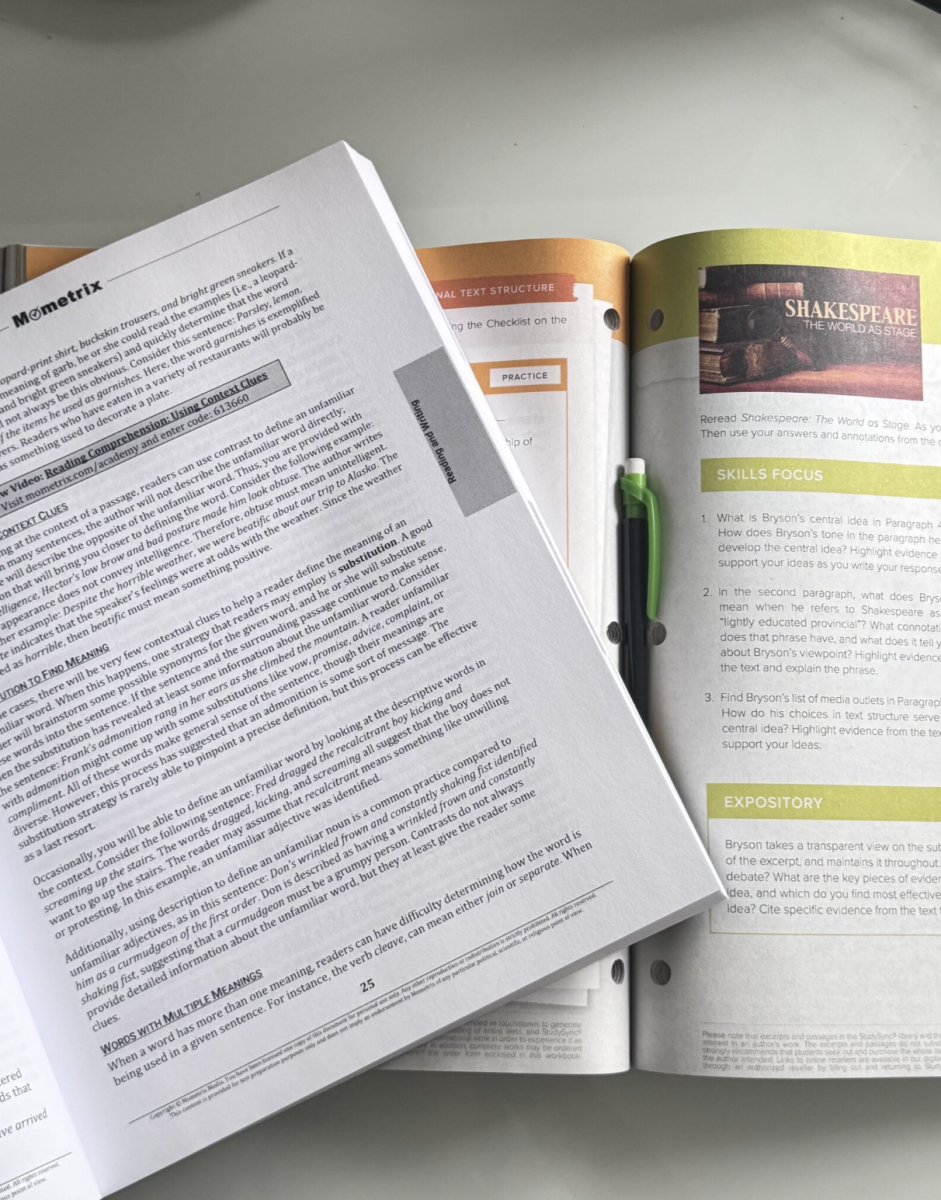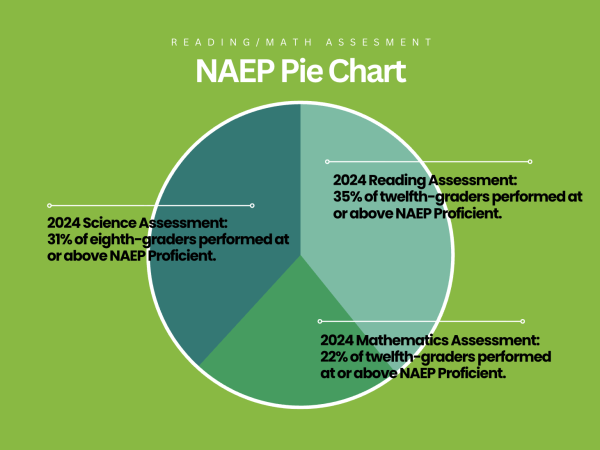Reading test scores drop to the worst point in decades
Rising concerns about academic integrity and skills among newer generations are at an all-time high. The Nation’s Report Card (NAEP) released its latest math and reading scores, showing the lowest levels in more than two decades among high school seniors, according to the National Assessment of Educational Progress.
Reading scores are at their lowest since the assessment began in 1992, while math scores have reached their lowest point since 2005. The data shows that student achievement continues to decline after the COVID-19 pandemic.
There are many theories about why this is happening. William Brangham explored some of them with Thomas Kane on the PBS NewsHour. Brangham noted, “Nearly a third of seniors do not have the basic reading skills needed to find the details in the given text to find its meaning.”
According to a Sept. 9 NPR report, new test scores from the Nation’s Report Card show declines in reading, math and science. Reading scores dipped for seniors, except among the highest-achieving students, compared to 2019, the last time this test was administered.
Compared with NAEP’s first 12th-grade reading assessment in 1992, today’s average score is 10 points lower. Many believe this downward trend began before the pandemic, whereas others attribute it to a decline in focus on test-based accountability since the No Child Left Behind Act expired in 2015. That act emphasized annual standardized testing and providing quality education to students from low-income families.
Students and Staff Speak Out
Kurt Thoreson, a teacher at Plant High School, frequently emphasizes the importance of attendance and its correlation with academic success.
“A combination of absenteeism and out-of-school distractions—students cannot be expected to learn the complex concepts and topics when they are in one class for less than an hour a day,” Thoreson said. “There needs to be study time at home, and sometimes there’s a lot of distraction with various forms of media.”
When asked about potential solutions, Thoreson said, “Holding more students accountable for their attendance would be the first step. Ever since COVID, attendance nationwide has gone down horribly. Finding a way to hold them accountable through perhaps truancy officers—someone who works with the school district to find kids that aren’t in school—would help.”
Students also shared their thoughts on the decline in scores.
“Lack of motivation and the will to want to finish off the year strong—the concept of senioritis, for example,” said Mia Derival, a senior. “In the second semester, when you have all the credits to graduate, you begin to care less about school and classes in general.”
In addition to Derival, senior Fiyori Russom said, “I think people have become dependent on AI, and that has led to a decrease in reading skills.”
The Three Main Causes
1. Chronic Absenteeism
Since the pandemic, adjustments to virtual schooling have impacted education. It’s now easier for students to make up schoolwork when absent. According to the NAEP report, nearly a third (31%) of 12th graders reported missing three or more days of school in the previous month in 2024, up from 26% in 2019. Missing four or more days per school quarter is considered chronic absenteeism. This increase in absenteeism indicates that reduced learning time is significantly affecting students.
2. Cultural Attitudes
Cultural attitudes play a significant role in shaping how students and teachers engage with reading. Education has changed substantially since the pandemic and the rise of social media, influencing how students perceive its importance. Many students now prefer fast, entertaining content over traditional reading.
3. Social Media
The rise in social media use has been linked to shorter attention spans and reduced engagement with traditional reading. According to a Sept. 20 Guardian report, education economist Thomas Kane noted that academic declines have also surfaced in other countries, suggesting a global trend connected to increased screen use.
Some U.S. states have already passed laws restricting phone use in schools. Kane believes a national effort is needed to evaluate these policies and determine whether they should be implemented more widely.
The Possible Solution
“I think the solution now is not just about test-based accountability,” Kane, a professor at Harvard’s Graduate School of Education, said. “It’s about states piloting ways to lower absenteeism and, as they have already done, piloting ways to lower social media use. Then we can learn from those efforts—what is the impact on student achievement—so we can spread what worked.”
The decline in reading scores is a complex issue, influenced by cultural attitudes, attendance, and the pervasive role of social media. Addressing it will require coordinated efforts from educators, parents, and policymakers to foster a culture that values and encourages reading. With carefully crafted strategies, it’s possible to reverse these trends and nurture a generation of engaged, skilled readers.


